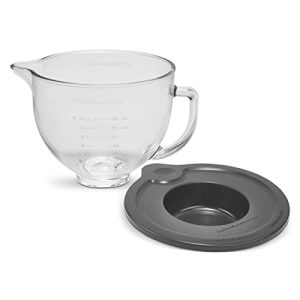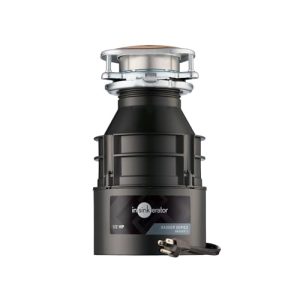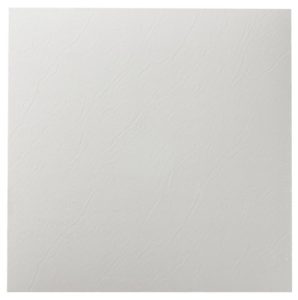Is your kitchen sink basket showing signs of wear or no longer fitting properly? Replacing it might seem like a tricky task, but it doesn’t have to be.
You can save time and money by doing it yourself with a few simple steps. You’ll discover how to replace a basket on your kitchen sink quickly and easily—no special tools or skills needed. Keep reading, and you’ll have your sink looking and working like new in no time.
Tools And Materials Needed
Replacing a basket on a kitchen sink needs the right tools and materials. Having everything ready makes the job faster and easier. This section lists what you need to gather before starting the replacement process.
Basic Tools
- Screwdriver (flathead and Phillips)
- Adjustable wrench
- Pliers
- Utility knife
- Bucket or container for catching water
Replacement Materials
- New sink basket strainer
- Plumber’s putty or silicone sealant
- Replacement rubber gasket
- Replacement metal or plastic washer
- Thread seal tape (Teflon tape)
Safety And Cleanup Supplies
- Rubber gloves
- Clean cloth or rag
- Towels to protect cabinet area
Preparing The Sink Area
Preparing the sink area is key before replacing a basket on a kitchen sink. This step ensures safety and makes the job easier. A clean and clear workspace prevents damage and helps you work faster.
Start by gathering all tools and materials needed. This avoids interruptions during the task. Turn off the water supply to avoid leaks or spills. Clear the area under the sink to access plumbing easily.
Clear The Sink And Surrounding Area
Remove dishes, soap, and other items from the sink. Wipe the sink dry to prevent slipping and mess. Keep the countertop free of clutter to have enough room.
Turn Off The Water Supply
Locate the shut-off valves under the sink. Turn both the hot and cold water valves clockwise until tight. Check that the water is off by running the faucet briefly.
Gather Necessary Tools And Materials
- Screwdriver (flathead or Phillips)
- Adjustable wrench or pliers
- Bucket or bowl to catch water
- Replacement basket drain
- Plumber’s putty or silicone sealant
Protect The Cabinet And Flooring
Place a towel or cloth under the sink to catch drips. Use a small bucket to catch any water from pipes. Protect the floor with a plastic sheet or cardboard.
Removing The Old Basket
Removing the old basket from your kitchen sink is a key step in replacing it. This process requires care and the right approach to avoid damage. Start by preparing your workspace and gathering necessary tools. The task involves turning off the water, disconnecting plumbing, and unscrewing the basket itself. Each part must be handled carefully to ensure smooth removal.
Turn Off Water Supply
Locate the water valves under the sink. Turn both hot and cold valves clockwise to stop the water. Check the faucet to confirm water flow has stopped. This prevents leaks and water damage during the removal process.
Disconnect Plumbing
Place a bucket under the pipes to catch any water. Use a wrench to loosen the slip nuts connecting the drain pipes. Carefully detach the pipes from the sink drain and trap. Set the pipes aside without causing damage.
Unscrew The Basket
Look under the sink to find the basket’s mounting nut. Use a basin wrench or adjustable wrench to turn the nut counterclockwise. Remove the nut completely to free the basket. Push the old basket up and out of the sink drain.
Cleaning The Sink Drain
Cleaning the sink drain is a key part of replacing a basket on a kitchen sink. A clean drain prevents clogs and keeps water flowing smoothly. Dirt, food particles, and soap scum often build up inside the drain. Removing these blockages helps avoid bad smells and slow drainage.
Regular cleaning also extends the life of your sink parts. It makes the basket replacement easier and more effective. Let’s explore simple ways to clean the sink drain before installing the new basket.
Remove Debris From The Drain Opening
Start by clearing visible debris from the drain opening. Use gloves to pull out any food scraps or hair. A small brush can help scrub away stuck particles. This step ensures the drain is clear for deeper cleaning.
Use A Baking Soda And Vinegar Solution
Pour half a cup of baking soda into the drain. Then add half a cup of white vinegar slowly. Let the mixture fizz and work for 10-15 minutes. It breaks down grime and kills bacteria inside the drain.
Flush The Drain With Hot Water
Boil a kettle or pot of water. Pour the hot water down the drain to flush out loosened debris. This helps wash away the baking soda and vinegar mix. It also clears any remaining buildup in the pipes.
Scrub The Drain With A Brush
Use a small, stiff brush to scrub the drain opening and sides. This removes stubborn grime that liquid cleaners cannot reach. Focus on the edges and grooves where dirt hides.
Check The Drain Trap For Clogs
Look under the sink and locate the drain trap. Place a bucket beneath to catch water. Unscrew the trap carefully and inspect it for blockages. Clean out any gunk before reassembling it tightly.
Installing The New Basket
Begin by removing the old basket and cleaning the sink drain area. Place the new basket in the drain hole, then secure it tightly underneath. Check for leaks to ensure a proper fit.
Installing the new basket on your kitchen sink is a simple task. With the right tools, this can be done in a few steps. You will need plumber’s putty and a wrench. These tools help secure the basket firmly in place. Follow these steps for a smooth installation.Apply Plumber’s Putty
Start by rolling a small piece of plumber’s putty in your hands. Make a long, thin rope of putty. Place this rope around the edge of the basket’s flange. The putty creates a waterproof seal. It prevents leaks from the sink. Ensure the rope is even and covers the entire flange.Place The Basket
Insert the basket into the sink’s drain hole. Press it down firmly. The putty should spread under the flange. This creates a tight seal. Check that the basket is centered. It should be flush with the sink. Remove any extra putty that squeezes out.Secure The Basket From Below
Go beneath the sink. Attach the rubber gasket to the basket’s threaded base. Follow with the friction ring. Next, screw on the locknut by hand. Use a wrench to tighten it securely. Ensure the basket does not move. Check the top of the sink. Make sure the basket is still centered and flush.Reconnecting The Plumbing
Reconnecting the plumbing after replacing a basket on your kitchen sink is a crucial step. It ensures everything flows smoothly without leaks or blockages. Taking your time here can save you from future headaches and costly repairs.
Check And Clean The Drain Pipes
Before you reconnect, inspect the drain pipes for any buildup or debris. A quick clean with a brush or cloth helps ensure a tight seal and proper flow. I once skipped this step and ended up with a slow drain that wasted hours of troubleshooting.
Fit The Basket Strainer Properly
Make sure the basket strainer sits flush in the sink hole. If it’s tilted or loose, water can leak underneath. Tighten the locknut just enough to hold it firmly without overtightening, which can crack the sink or damage the seal.
Reattach The Tailpiece And P-trap
The tailpiece connects the basket strainer to your drain system. Slide it into place and secure it with the slip nuts. Next, align the P-trap and tighten its connections, ensuring there are no gaps where water can escape.
Test For Leaks
After everything is connected, run water through the sink and watch for drips. Use a flashlight if needed to spot any hidden leaks. Have a towel ready to catch any drips, and tighten connections slightly if you find leaks.
Use Plumber’s Putty Or Silicone
To prevent leaks around the basket strainer, apply plumber’s putty or silicone sealant before fitting it in place. This creates a watertight barrier. I recommend plumber’s putty for its easier cleanup and reusability.
Double-check All Connections
It’s easy to overlook a loose nut or misaligned pipe. Give each connection a gentle tug to confirm it’s secure. Have you ever fixed a leak only to find it was from a simple loose fitting?
Testing For Leaks
Testing for leaks is a crucial step after replacing a basket on your kitchen sink. Even a tiny drip can cause water damage over time and lead to costly repairs. Taking the time to carefully check your work ensures your sink stays dry and functions perfectly.
Visual Inspection Around The Basket
Start by looking closely around the basket area. Use a flashlight if needed to catch any moisture or water droplets forming near the seals or connections. Dry the area first, then watch carefully as you run water in the sink.
Have you noticed how a small wet spot can quickly turn into a bigger problem? Catching it early here can save you hassle later.
Running Water And Checking Drainage
Turn on your faucet and let the water run at different speeds. Observe the basket and the plumbing underneath while the water drains. Pay attention to any signs of leaks, such as water dripping or pooling under the sink.
Does the water flow smoothly without backing up? Slow drainage might hint at an installation issue, which could cause leaks.
Using Tissue Or Paper Towel To Detect Moisture
Place a dry tissue or paper towel around the basket’s edge and under the sink pipes. This simple tool helps you spot leaks you might miss with your eyes alone. If the paper towel becomes damp after running water, you’ve found a leak.
Sometimes, leaks are so subtle that only a tissue can reveal them. This trick has saved me from missing a sneaky drip more than once.
Checking The Tightness Of Nuts And Seals
Feel around the nuts and seals with your hand to ensure they’re snug but not overly tight. Over-tightening can damage the gasket, while loose fittings cause leaks. Adjust as needed and retest to confirm there’s no moisture.
Do you remember the last time you tightened something too much and caused a bigger problem? Being gentle yet firm is key here.
Tips For Maintaining Your Sink Basket
Regular cleaning prevents buildup and keeps your sink basket working well. Removing the old basket carefully helps avoid damage. Installing a new basket ensures proper fit and smooth drainage.
Maintaining your sink basket can extend its lifespan and keep your kitchen hygienic. Regular care ensures that your sink remains functional and fresh. Here are some simple tips to help you keep your sink basket in top condition.Regular Cleaning
Clean your sink basket weekly to prevent blockages. Use mild soap and warm water. Scrub gently with a soft brush or cloth. This removes food particles and prevents odor.Use Baking Soda And Vinegar
Sprinkle baking soda over the basket. Pour vinegar over it and let it fizz. Rinse with hot water after a few minutes. This natural method cleans and deodorizes effectively.Avoid Harsh Chemicals
Harsh chemicals can damage the basket material. Opt for natural cleaners or gentle dish soap. This keeps the basket in good shape for longer.Inspect For Damage
Check the basket regularly for cracks or wear. Replace it if you notice any damage. This prevents leaks and maintains sink efficiency.Remove And Clean The Strainer
Lift the strainer and rinse it under warm water. Remove trapped food bits and debris. This keeps water flowing smoothly through the sink.Keep The Drain Clear
Avoid letting large food scraps go down the drain. Use a sink strainer to catch them. This prevents clogs and ensures smooth drainage.Dry Thoroughly
After cleaning, dry the basket completely. Use a towel to remove excess moisture. This prevents rust and extends its lifespan.Frequently Asked Questions
How Do You Remove A Basket From A Kitchen Sink?
To remove a sink basket, loosen the locknut under the sink. Use pliers or a wrench to unscrew it. Then, lift the basket strainer from the sink drain. Clean the area before installing a new basket.
What Tools Are Needed To Replace A Kitchen Sink Basket?
You need pliers, an adjustable wrench, plumber’s putty, and a bucket. These tools help loosen nuts, seal the new basket, and catch any water spills. Having a clean cloth is useful to wipe off excess putty.
How Do You Seal A New Sink Basket Properly?
Apply plumber’s putty around the basket flange before placing it. Press firmly to create a watertight seal. Tighten the locknut underneath evenly. Remove excess putty to avoid clogs or leaks around the basket.
How Long Does It Take To Replace A Sink Basket?
Replacing a sink basket usually takes 20 to 30 minutes. It depends on your experience and tool availability. Preparing the area and cleaning up afterward are included in this time.
Conclusion
Replacing a basket on a kitchen sink is simple and quick. You only need a few tools and some basic steps. Start by removing the old basket carefully. Then, install the new one firmly to avoid leaks. Checking for a good fit saves trouble later.
This small task improves your sink’s function and appearance. Now, you can enjoy a fresh and clean kitchen sink. No special skills required—just follow the steps and take your time. Easy, right?

Sophie Hartwell is the founder of KitchenQuik.com, where she shares kitchen tips, smart cooking hacks, and the best product picks to make everyday cooking easier and more enjoyable.




